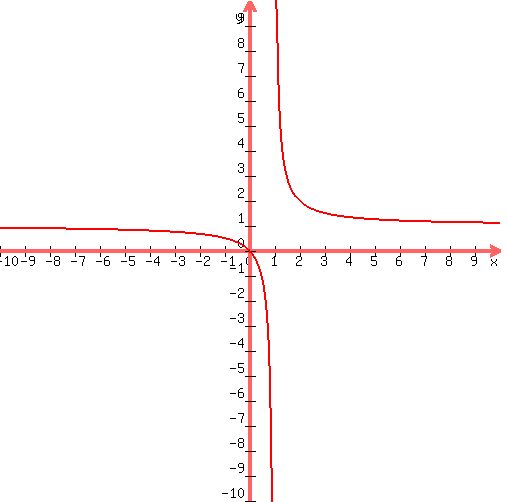Question 469955: I need help Identify the vertical and horizontal asymptotes of this function?
y=-3/(x-1)+2
please help me thank you soo very much i just get so confused i need it worked out so i can understand it
Answer by MathLover1(20849)   (Show Source): (Show Source):
You can put this solution on YOUR website! Write the function for which you are trying to find a vertical asymptote. usually rational functions, with the variable  somewhere in the denominator. When the denominator of a rational function approaches somewhere in the denominator. When the denominator of a rational function approaches  , it , it  a a   (a line that passes through (a line that passes through  and is parallel to y-axis). and is parallel to y-axis).
Find the value of x that makes the denominator equal to zero.
your function is  , you would solve the equation , you would solve the equation  , which is , which is  . .
Take the limit of the function as  approaches the value you found from both directions. approaches the value you found from both directions.
For your example, as  approaches approaches  from the left, from the left,  approaches positive approaches positive 
and when  is approached from the right, is approached from the right,  approaches negative approaches negative 
This means the graph of the function splits at the discontinuity, jumping from negative infinity to positive infinity.

another example for horizontal asymptotes:
Horizontal asymptotes can be found in a wide variety of functions. For this example, the function is  . .
Take the limit of the function as  approaches infinity. In this example, the " approaches infinity. In this example, the " " can be ignored because it becomes insignificant as " can be ignored because it becomes insignificant as  approaches approaches  . Infinity minus . Infinity minus  is is   . .
So, the function becomes  , which equals , which equals  . Therefore, the limit as . Therefore, the limit as  approaches infinity of approaches infinity of 
Use the solution of the limit to write your asymptote equation. If the solution is a fixed value, there is a horizontal asymptote, but if the solution is infinity, there is no horizontal asymptote. If the solution is another function, there is an asymptote, but it is neither horizontal or vertical. For this example, the  asymptote is asymptote is  (a line that passes through (a line that passes through  and is parallel to x-axis). and is parallel to x-axis).

|
|
|